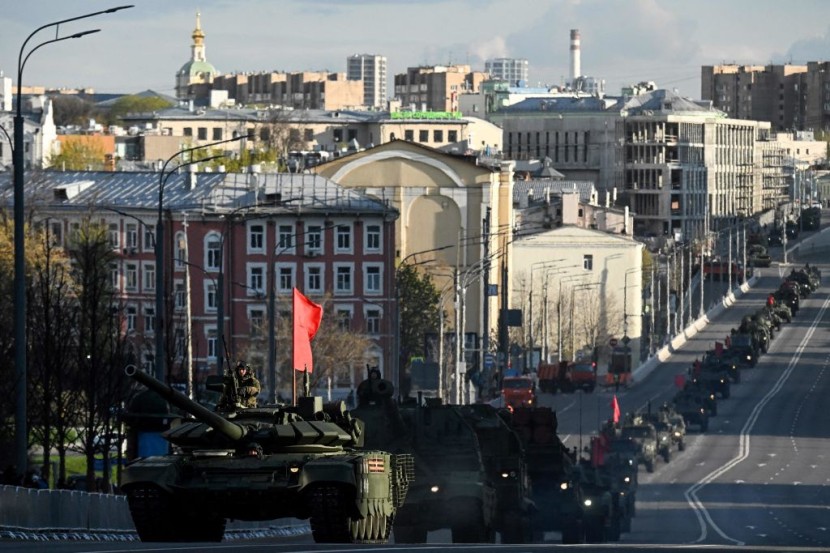
In Ukraine, a battle of attrition has begun, with Russian forces utilizing heavy artillery fire in the south and east of the nation, as well as deep strikes farther west, in an attempt to disrupt Western logistical supply lines.
A European diplomat in Washington told reporters Thursday that predicting when Russia's attack would conclude is extremely difficult. Russian President Vladimir Putin's long-term goal is to take control of the greater Donbas area, where Ukrainians and Russians have been fighting since 2014, as well as the land bridge that connects mainland Ukraine to Russian-occupied Crimea.
Europe: Russian Forces Have Not Made Much Progress in Invading Ukraine
Furthermore, Russian soldiers pressing from the east, south, and north of Izium in eastern Ukraine, utilizing heavy artillery fire, have made little headway on the ground, according to the European official.
The Russians attempted to capture the remainder of the Donbas, including complicated terrain with large rivers and metropolitan centers. The Russians might press on to the port city of Odesa farther west if they can secure and move beyond the southern Kherson area.
However, this is doubtful since it would need a difficult amphibious operation, and Russia also lacks the necessary forces to push to the southern shore, according to the official. The officer further stated that if logistical access for supplies is not secured, soldier morale will suffer.
Russia has carried out deep strikes beyond the line of contact to target resupply routes and western military aid streaming into Ukraine, with extensive shelling of storage facilities, bridges, and trains, as well as missile strikes on power stations in the western city of Lviv on Tuesday.
"We are still assessing the degree to which they struck what they intended," Pentagon spokesman John Kirby told reporters on Wednesday, referring to Russia's most recent airstrikes. They are not adept at precise strikes. They are not discriminatory with how they target, CBS News reported.
Heavy fighting has erupted inside the Azovstal steel complex, where Mariupol's final defenders have been holding out for weeks.
Russian forces, assisted by planes and artillery, started an attack on the large facility, according to the Azov Regiment, an experienced volunteer group with neo-Nazi roots, in a statement on its Telegram channel on Thursday. Civilians and injured troops are still trapped in the plant's basement.
As the Kremlin's eastern offensive struggles to gain traction, complete control of Mariupol, the vital port city, would be a big win. Russian operations in recent days have targeted infrastructure across the nation, ostensibly to block the delivery of Western weaponry.
While bolstering support for Kyiv, Ukraine's allies also consider how to punish Moscow and thwart its war efforts. Countries in the European Union will continue to debate the bloc's planned embargo on Russian oil, which is both a major source of revenue for the Kremlin and an important supply of energy for the continent, as per NBC News.
Russia Loses Most Advanced Tank
Meanwhile, Russia's most sophisticated tank, the T-90M, was reportedly destroyed by Ukrainian forces just days after it had been deployed. The defense correspondent for the Kyiv Independent, Illia Ponomarenko, uploaded a photo of the burning ruin after the tank was struck on Wednesday. The tank is equipped with enhanced armor protection and countermeasures technologies, as well as a modified turret with an upgraded 125mm gun.
The armor is meant to protect against shaped charges while also reducing the impact of armor-piercing weapons. According to estimates, only roughly 100 models are now in use. Analysts have previously said that older Russian tanks suffer from the so-called "jack-in-the-box" phenomenon, which has been known by Western forces for decades.
The flaw affected the invading country's Soviet-era tanks, notably the T-72 and T-80, utilized in Ukraine. They are prone to losing their top indirect strikes because of the 'jack-in-the-box' effect, which is triggered by a pressure surge caused by the explosion of stored ammo.
Unlike modern Western combat tanks, many of the Russian army's tanks have vast stocks of ammunition stored immediately beneath their turrets in an auto-loading system designed to speed up the main gun's loading, according to the New York Post.
Related Article : EU Aviation Safety Agency Warns Higher Risk of Civilian Airlines Being Mistakenly Attacked Amid Russia-Ukraine War
© 2025 HNGN, All rights reserved. Do not reproduce without permission.








